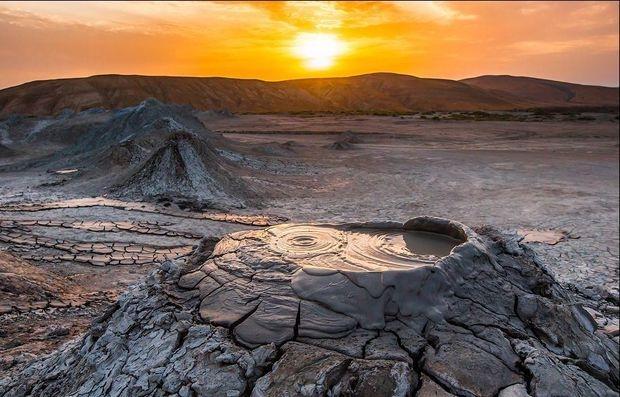Unique and rare minerals discovered in Azerbaijan's mud volcanoes

By Laman Ismayilova
Unique and rare minerals have been discovered inside mud volcanoes in Azerbaijan.
Mud volcanoes contain rare types of minerals in breccia, a rock composed of broken fragments of minerals or rock cemented together by a fine-grained matrix.
It may have a variety of different origins, as indicated by the named types including sedimentary breccia, tectonic breccia, igneous breccia, impact breccia, and hydrothermal breccia.
The studies revealed the presence of natural minerals, nonspecific sulfates, oxides, natural iron (silicate, hematite) as well as rare types of minerals. All these minerals are possibly formed under the influence of deep fluids.
An analysis of mud breccia was made by Azerbaijani and Ukrainian scientists as part of the project "Accessory mineralization of breccia in Azerbaijan's mud volcanoes".
The studies were conducted jointly with specialists from the Ukraine's Center for Problems of Marine Geology, Geoecology and Sedimentary Ore Formation.
Bubbling and belching away like witches’ cauldrons, mud volcanoes are unbelievably beautiful natural wonders.
Azerbaijan is home to some stunning and unique natural wonders. The Land of Fire has the greatest number of mud volcanoes worldwide.
At present, there are 365 mud volcanoes in Azerbaijan. Most volcanoes are active, and 43 of them are protected by the Azerbaijan Ministry of Ecology and Natural Resources. For security reasons, the admission of people there is prohibited.
Until the end of 2019, Azerbaijani scientists expect several volcanic eruptions, including Bozdag-Gobu volcanoes in Absheron district, Bahar in Alat village and Shikhzahirli volcano in Gobustan.
Tourists can get a unique panoramic view of the spectacular natural wonder in the Gobustan State Historical-Artistic Reserve.
The world’s largest mud volcanoes - Boyuk Khanizadagh and Turaghai - are both in Azerbaijan. Boyuk Khanizadagh erupted on October 10, 2001, shooting out flames for 300 meters in the air. It was the highest record for flames shot from a mud volcano.
NASA geologists studying Mars concluded that mud volcanoes of Azerbaijan are similar to uplands of the planet for their structure.
On September 5, 2004, the largest mud volcano in the territory of Azerbaijan was added into the Guinness World Records. Azerbaijan's rich fields of oil and gas condensate such as Lokbatan, Garadagh, Oil Rocks, and Mishovdag were also discovered near mud volcanoes.
The lava, mud, and liquid spewed by mud volcanoes are used as raw materials for chemical and construction industries, as well as pharmacology.
Enriched with specific components - mineral salts, organic substances, microelements, volcanic mud has medicinal properties that have a beneficial effect on the human body. Volcanic mud gives a great effect in the treatment of patients suffering from diseases of the peripheral and central nervous system, gastrointestinal tract, skin, etc.
---
Laman Ismayilova is AzerNews’ staff journalist, follow her on Twitter: @Lam_Ismayilova
Follow us on Twitter @AzerNewsAz
Here we are to serve you with news right now. It does not cost much, but worth your attention.
Choose to support open, independent, quality journalism and subscribe on a monthly basis.
By subscribing to our online newspaper, you can have full digital access to all news, analysis, and much more.
You can also follow AzerNEWS on Twitter @AzerNewsAz or Facebook @AzerNewsNewspaper
Thank you!
